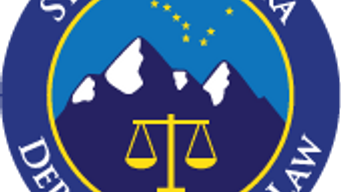The FTC recently updated its Endorsement Guides, in part to provide clarity and guidance on sufficient disclosure of material connections (i.e., a connection between the endorser and the seller of an advertised product that might materially affect the weight or credibility of the endorsement). In guidance regarding the updated Endorsement Guides, the FTC noted that “[w]hen the sponsor’s identity is unclear but would matter to consumers, the sponsor should probably be identified.”
NAD recently applied this guidance in an independent monitoring action and found that a “sponsored” disclosure was insufficient for social media content promoting a brand and posted by a publisher – as consumers may not understand whether the post was sponsored by the brand or by the publisher.
Disclosure of Material Connection
Specifically, NAD reviewed three posts featuring Cariuma brand sneakers on the Instagram and Facebook accounts of Travel + Leisure, US Weekly and The Quality Edit. These posts promoted articles with affiliate marketing links, included images of Cariuma sneakers, and invited consumers to “shop here” or “learn more” about the sneakers. These posts were labeled “sponsored” below the publisher’s name.
According to NAD, these posts did not sufficiently disclose the material connection between Cariuma and the publisher. Citing FTC guidance, NAD noted that “a ‘sponsored’ disclosure alone may not alert consumers that the post is advertising and notes that it would be clearer if the post identified the brand that sponsored the social media post.”
As it was not clear if the sponsoring party was the publisher or Cariuma, NAD recommended that Cariuma clearly and conspicuously disclose its material connection to the publisher of the social media posts.
NAD Jurisdiction
Note that NAD does not have jurisdiction over editorial content – but does have jurisdiction over advertising content that is presented as editorial content in a way that would confuse and deceive consumers (i.e., native advertising). When determining whether content with affiliate links is advertising, NAD considers whether the content was created independent of the economic motivation introduced by the affiliate marketing revenue, such as whether the business staff provided input regarding the potential for such affiliate link revenue or whether the brand had input on whether the product was recommended or the statements made about the product.
Travel + Leisure and US Weekly both received commissions for products sold by users who clicked on the Cariuma link in articles and social media posts, but retained sole and complete discretion as to the content of any article written and published on their websites and social media accounts about Cariuma (including control over the language and placement of disclosures). By contrast, The Quality Edit was contractually obligated to elevate Cariuma brand awareness and drive incremental purchaser volume via published articles and social media posts about the brand and its products. Cariuma approved articles and social media posts – but once approved, The Quality Edit had discretion over the display of articles and placement of disclosures. However, Cariuma paid the publishers to amplify the editorial content in all of the social media posts.
Accordingly, NAD determined that:
- Content created and published by The Quality Edit was advertising for Cariuma because Cariuma retained full editorial control over the creative content with The Quality Edit and approved content before publication.
- Social media posts by Travel + Leisure and US Weekly were paid endorsements for Cariuma and advertising because Cariuma paid to amplify each social media post.
The Bottom Line:
- Advertisers can be held responsible for disclosures in native advertising, including in social media.
- When determining whether content with affiliate links is advertising, consider whether the content was created independent of the economic motivation introduced by the affiliate marketing revenue.
- If a disclosure is required, when in doubt, add the brand’s name. “Ad” and “sponsored” disclosures alone may not sufficiently identify the sponsoring advertiser.





